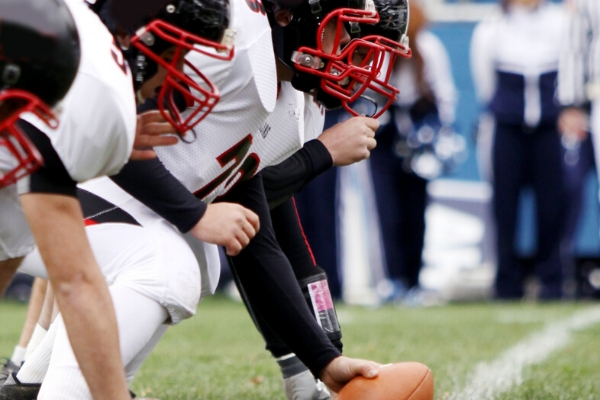The magnitude of the Super Bowl media hype focuses our attention on football star athletes and often the details of their life journeys. Professional sports figures are truly elite athletes, each a one-in-a-thousand success story. We shower them with praise, admiration and financial windfalls at levels almost unmatched elsewhere in society. So when they have met and overcome so many challenges on the way to the top of their sport, it baffles us when they seem to throw it all away for substances of abuse. There are many stories of elite athletes, admired professionals, who have fallen prey to drugs and/or alcohol. Despite second and even third chances for redemption, they have nonetheless returned to abuse the forbidden substances and have as a direct consequence lost their careers, their wealth and their favored status in society and among their friends and families. There are few spectacles sadder to behold. They usually have no back up profession, no plan B. 
Addicted Athletes in Professional Sports
But what really has happened to them, what has actually occurred? Their peers who have not succumbed to addiction faced the same challenges of the highest levels of competition, sacrifice, passion, injuries, pain, abuse, media pressures, personal tragedies, exposure to drugs and alcohol, emotional roller-coasters, mood swings, and so on. Why did this sub-group of athletes succumb to addiction? And it is indeed addiction to which they have fallen. Why else after your third or fourth warning, on your last chance, would you partake of a substance at the cost of a multi-million dollar contract? We the public ask about our sports heroes who have destroyed their careers and lives via substance use disorders: Are they dumb, weak-willed, stupid, immoral, insane, sociopathic, or involved with a criminal element? Or being more informed, we ask: Did they begin using substances like so many of their peers and, over the course of time, developed a chronic disorder of the brain? By the time athletes reach the elite professional levels of their sport, they know they are special and gifted, and many know they are simply “the best” at what they do. This leads to a common source of suffering when they find themselves second or third string, not playing much, a great frustration and disappointment. After all, suffering is the tension we feel within us between the way things really are and the way we think things ought to be.
Substance Abuse in American Sports
For the athletes thus suffering, substance abuse feels better than what is going on in their life. He or she has no alternative knowledge base for change. No other coping mechanism is known. Their use of addicting substances began the same as it has for most of us, with the acute drug effects, altering one way or another our state of mind and emotions. Many of us are involved in recreational use, and even repetitive use. Considerably fewer of us experience tolerance, then an overwhelming desire for the substance, loss of control, dependence and addiction. In such case, substances have hijacked the reward center in the brain and thus one’s mind and consequently one’s life. An individual’s capacity of choice has been eliminated. Despite consequences, they are doomed to repeat the aberrant and forbidden behavior. Instead of long-term reward and delayed gratification, those who are addicted will inevitably choose immediate gratification, to get high to cope and not have to deal with unpleasant and painful feelings. These have become learned and entrenched behaviors supported by a brain which has changed. The athlete now “pathologically pursues reward and/or other relief by substance use and other behaviors”, according to the American Society of Addiction Medicine (ASAM) definition of addiction. ASAM defines addiction as “a primary, chronic disease of the brain reward, motivation, memory and related circuitry.”
Getting Help for Addicted Athletes
The professional athlete’s often oversized ego, sense of self-sufficiency, and fear of stigma and job loss most often prevent them from seeking help on their own. Their substance abuse recovery prognosis is also strongly affected by their immediate associates. Some have loving families who only want the best for the athlete, others want only the material benefits and associated notoriety. All have entourages, and some of these are protective, some are seductive, and all too many are destructive. There is hope! Early recognition of the evolving addiction disease process and intervention with appropriate and adequate treatment most often leads to success when the athlete continues to be supported and monitored. All of the professional sports organizations have substances of abuse programs which are highly sophisticated. As humans, professional athletes are no different than the rest of us, with about 15% of us vulnerable to substance use disorders. The biggest difference for them is the magnifying lens of the media, first hyping their success and accomplishments, then blowing up in headlines their fall from grace. Let us remember to see them first and foremost as humans suffering from the disease of addiction and in need of our understanding and compassion. There should be no greater stigma for this disease than for any other. Let us not support the media who assert otherwise! Richard B. Seely, MD Psychiatrist, Addictionologist


